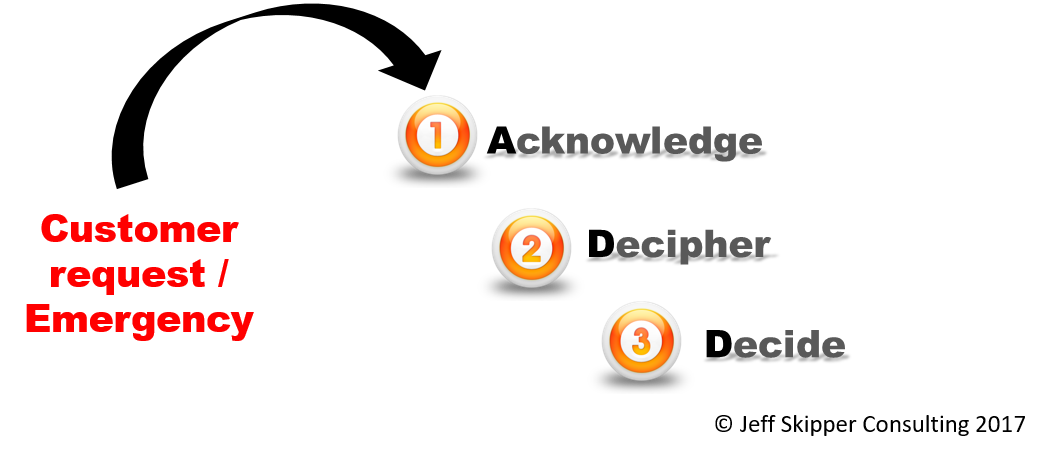“I need to see you today!” When bosses and clients make demands, the typical response is to meet the request immediately. After all, they wouldn’t ask if it wasn’t urgent, would they? Yet, we’ve all responded to supposed emergencies only to find they aren’t emergencies at all.
When I began working with clients to enhance their relationship and customer response skills, I created the ADD approach to ensure the needs of both parties are met with the most efficient use of time. This works for all types of customer and peer requests.

1. Acknowledge
Regardless of what a person is saying, no matter how illogical or inappropriate. acknowledge where they are coming from. Remember what it’s like when someone tells you to “calm down.” It usually has the opposite effect. Instead, acknowledge where they are coming from:
- Wow! That sounds terrible!
- I can see how that would be so frustrating.
- A lot of people have been surprised at that as well.
Validating the emotion starts the process of defusing it. It sets you up as a partner in resolving the situation, rather than someone they need to force to help them.
Do not commit to a course of action yet. Agreeing to a meeting may defer action that can be taken immediately. Confirming action could commit you to the wrong answer if you don’t have all the details.
2. Decipher
Never, ever quote policy at this stage–what you can and can’t do. You don’t yet know what needs to be done, so why establish limitations?
Get the facts.What happened? Where was the breakdown? Who was involved? What is causing the other person the most distress right now? Work towards root causes of the problem. It is not uncommon that a solid line of questioning reveals the right answer about what the requestor needs to do themselves.
3. Decide
With facts in hand, now you can make a mutual decision about next steps together. It goes like this:
- Here is what I can do for you right now. Would that make things right? Would that be acceptable to you?
- Here are three options for moving forward. Which works best for you?
- Before carrying out your request, I’d like to follow up with a couple items to ensure we do the best we can for you. Then we can touch base again. When would be best for me to call you back?
A colleague of mine recently sent me a note: “This project situation is getting out of hand! When can we meet?” That would have meant a 2 hour commitment including travel time. My response: “This is a concerning situation and we do need to talk. Let’s start with a phone call today and determine what we need to do together.” We talked, sorted out what was most critical and took action faster, with 1.5 hours back in my pocket to make it happen. Would you like to save that kind of time?
Changing Your Mind
When customers and peers make demands, it’s because they are trying to re-exert control over a situation that is not going the way they want. In these situations you’re main intent is to give them a sense of control. Giving them a voice is the first part. Working to decipher cause and decide on a course of action reinforces a sense of control, even if real choice is limited.

Thoughtfully Yours,
Jeff



